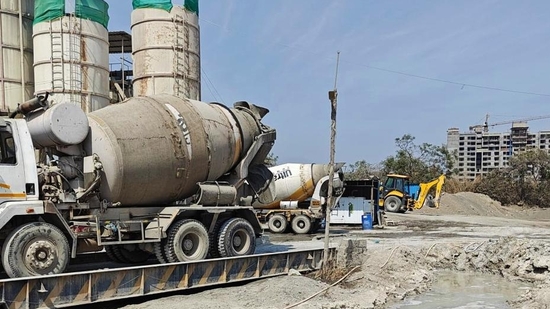Chloride corrosion in buildings: Understanding and prevention
This article is authored by Pushpam Kumar, national target manager, engineered refurbishment, Sika India Private Limited.
Imagine moving into a brand-new high-rise apartment, built with the highest standards and boasting superior concrete strength. Everything looks flawless. But within a few years, cracks begin to appear, rust stains seep through the walls, and chunks of concrete start falling. What went wrong? The culprit is often an invisible yet relentless enemy: Chloride corrosion.

Across India, from Delhi NCR to Chennai, even well-constructed buildings are suffering from premature deterioration due to chloride-induced corrosion. This isn’t just an Indian problem; it’s a global challenge, with major infrastructure projects facing chloride attacks. The good news? It’s entirely preventable, and the solution is proactive maintenance.
Chloride-related damage typically emerges over a longer period, often years after construction. The process involves chloride ions penetrating the concrete and reaching the steel reinforcements. This penetration can take time, depending on factors such as the presence of cracks and environmental conditions. Once the chloride ions reach the steel, they break down the protective oxide layer, leading to corrosion. The rust formed from this corrosion expands, causing internal pressure that can crack and weaken the concrete. This gradual process means that significant damage might not be visible until years after the initial exposure to chlorides. Corrosion can occur due to rainwater infiltration, plumbing leaks, or prolonged exposure to moisture. If left unchecked, corrosion weakens the structure and reduces its load-bearing capacity, making repairs both costly and unavoidable. Undertaking regular maintenance measures is the only effective means of prevention.
Ensuring a building’s longevity depends on the developer’s commitment to proper maintenance and regular assessments of the building’s strength and other related issues. Even a well-built structure that meets Indian Standard codes at the time of construction / possession can suffer severe corrosion if maintenance is neglected. To prevent this, developers must implement stringent maintenance plans, educate residents on early detection, and ensure timely repairs.
Given that chloride contamination is inevitable, continuous monitoring and preventive maintenance are essential to safeguarding buildings. Regular inspections remain essential to detect early signs of damage, such as rust stains, cracks, or surface deterioration. Advanced testing methods, such as electrical resistivity and Half-Cell Corrosion Potential Mapping allow engineers to check for chloride damage without drilling into the concrete. If corrosion is detected, various repair techniques can be used. Concrete Repair involves removing damaged concrete, treating reinforcement, and applying chloride-resistant concrete. Cathodic Protection applies a small electrical current to the steel reinforcement to prevent corrosion. Re-alkalisation restores the concrete’s alkalinity to rebuild its protective properties, while Concrete Protection slow chloride penetration, extending structural life. Specialised products penetrate concrete and form a protective layer around steel reinforcements, delaying corrosion and improving durability.
Addressing chloride corrosion is not just about repairing damage; it is about ensuring the long-term safety and sustainability of our infrastructure. The responsibility extends beyond construction to the ongoing upkeep of the structures. Without proper maintenance, no building is immune to chloride attacks. Regular inspections and timely repairs must be prioritised to prevent deterioration. Residents also have a crucial role to play. They should promptly report any signs of damage and insist on swift action. If their concerns go unaddressed, they should escalate the matter to local authorities to ensure necessary intervention.
This article is authored by Pushpam Kumar, national target manager, engineered refurbishment, Sika India Private Limited.
All Access.
One Subscription.
Get 360° coverage—from daily headlines
to 100 year archives.



HT App & Website







